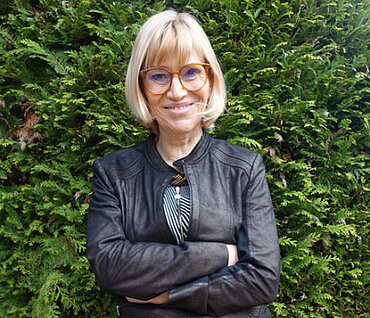Marie-Christine Birling, recipient of the CNRS Crystal Medal 2023
Marie-Christine Birling, chief engineer of the Genetic Engineering and Genome Editing Department at ICS, is the recipient of one of the 2023 Cristal Medals awarded by CNRS, the organization announced on Thursday, May 4. Recognizing a career full of great achievements, this medal particularly rewards Marie-Christine Birling's contribution to the adaptation of CRISPR/Cas9 technology to genome editing and the production of animal models.

Adapting CRISPR/Cas9 technology for fine genome editing
Invented in 2012 by Emmanuelle Charpentier and Jennifer Doudna, winners of the 2020 Nobel Prize in Chemistry, the CRISPR-Cas9 technology has revolutionized part of biology research. As early as 2013 at ICS, Marie-Christine Birling worked to "demonstrate that it could be used in the generation of animal models, to make gene deletion or duplication."
Like small scissors, the CRISPR/Cas9 technology can be used to make a cut at one or more precise locations in the DNA to remove certain sequences. Three scenarios can then occur: either the cell repairs itself and a gene is deleted, or the cell dies, or a new fragment is inserted to obtain a new sequence with different effects.
Adapted to the generation of animal models by the engineer and her team at ICS, the CRISPR/Cas9 technology has greatly accelerated their production. The development of this technology "has also allowed us to better apply the 3Rs (reduce, replace, refine) by dividing by 5 the number of animals needed to produce an animal model.
"Where it used to take one to four years depending on the complexity of the models, CRISPR/cas9 technology allows us to generate models in 6 months to a maximum of one year."
Developing technologies and processes to accelerate research on rare diseases
In 2017, Marie-Christine Birling developed a particular approach: CRISMERE. Coupled with BAC modification and the use of mouse embryonic stem cells, this new approach makes it possible to replace or insert genomic fragments of significant size, up to 200 kb (1kb = 1,000 base pairs of DNA). This approach has, for example, made it possible to produce a rat model with a third chromosome 21 that is entirely similar to human chromosome 21, thus providing a better understanding of Trisomy 21.
In 2021, Marie-Christine Birling co-authored and published with the International Mouse Phenotyping Consortium (IMPC) an article about the generation and characterization of more than 5000 new mouse models. She and her co-authors emphasized the importance of quality control to ensure that the models produced meet the expectations of scientists.
Recently, and in the continuity of these projects, the engineer and her team have worked on the production of a mouse model in collaboration with the Cure CLCN4 patient association, a rare genetic disease that has been little studied and causes severe mental retardation. This model includes the entire genetic profile of the disease and was shared with the scientific community via Infrafrontier, a European network.
The result? "A scientist has already contacted us to access it, which means that he will probably launch research on the subject and perhaps find solutions to improve patients' lives. This gives hope to the families”.
